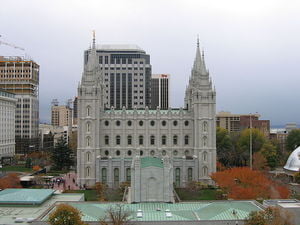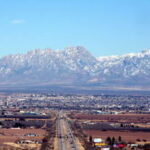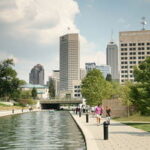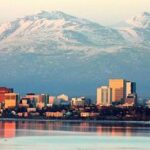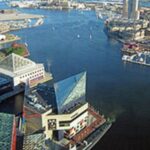This article is the forty-fourth in a 50 state series: it lists the largest cities in Utah by population size and provides demographic details for each city–total population, population by age group, racial composition of the population, land area, and population density.
1. Largest Cities in Utah: Salt Lake City
Located in the central part of northern Utah, Salt Lake City is the state’s capital and largest city with an estimated population of 184,881.
Grouped by age, 23.8% of the population is under 18, 12.5% is 18 to 24, 32.6% is 25 to 44, 21.0% is 45 to 64, and 10.1% is 65 or older. The median age of the population is 31.6.
The racial composition of the city is 80.7% White, 3.6% Black or African American, 1.0% Native American, 4.3% Asian, 1.9% Pacific Islander, 6.2% from other races, and 2.3% from two or more races. The population is 21.9% Hispanic or Latino of any race.
The land area of the city is 109.08 square miles. The city’s population density is 1,694.91 people per square mile.
2. Largest Cities in Utah: West Valley City
Situated in the central part of northern Utah, West Valley City is the second largest city in the state with an estimated population of 122,568.
Classified by age, 31.7% of the population is under 18, 10.0% is 18 to 24, 31.3% is 25 to 44, 20.2% is 45 to 64, and 6.8% is 65 or older. The median age of the population is 29.8.
The racial complexion of the city is 81.2% White, 1.1% Black or African American, 1.4% Native American, 4.1% Asian, 3.3% Pacific Islander, 6.7% from other races, and 2.1% from two or more races. The population is 29.5% Hispanic or Latino of any race.
The land area of the city is 35.4 square miles. The city’s population density is 3,462.37 people per square mile.
3. Largest Cities in Utah: Provo
Located in the northern part of central Utah, Provo is the third largest city in the state with an estimated population of 121,687.
A comparatively large part of the population is college-aged: the city is home to Brigham Young University. Categorized by age, 21.6% of the population is under 18, 37.7% is 18 to 24, 25.1% is 25 to 44, 10.1% is 45 to 64, and 5.5% is 65 or older. The median age of the population is 23.3.
The racial profile of the city is 85.5% White, 0.7% Black or African American, 0.7% Native American, 2.8% Asian, 1.0% Pacific Islander, 6.6% from other races, and 2.6% from two or more races. The population is 13.3% Hispanic or Latino of any race.
The land area of the city is 39.64 square miles. The city’s population density is 3,069.80 people per square mile.
4. Largest Cities in Utah: West Jordan
Situated in the central part of northern Utah, West Jordan is the fourth largest city in the state with an estimated population of 102,337.
Sorted by age, 36.2% of the population is under 18, 10.1% is 18 to 24, 30.2% is 25 to 44, 19.1% is 45 to 64, and 4.4% is 65 or older. The median age of the population is 27.3.
The racial makeup of the city is 88.6% White, 0.4% Black or African American, 0.5% Native American, 2.6% Asian, 2.4% Pacific Islander, 3.8% from other races, and 1.6% from two or more races. The population is 15.6% Hispanic or Latino of any race.
The land area of the city is 30.9 square miles. The city’s population density is 3,311.88 people per square mile.
5. Largest Cities in Utah: Orem
Located in the central part of northern Utah, Orem is the fifth largest city in the state with an estimated population of 90,233.
Arranged by age, 31.3% of the population is under 18, 14.6% is 18 to 24, 29.0% is 25 to 44, 16.6% is 45 to 64, and 8.5% is 65 or older. The median age of the population is 26.3.
The racial mix of the city is 91.7% White, 0.8% Black or African American, 0.7% Native American, 2.0% Asian, 0.4% Pacific Islander, 2.3% from other races, and 2.1% from two or more races. The population is 13.4% Hispanic or Latino of any race.
The land area of the city is 18.44 square miles. The city’s population density is 4,893.33 people per square mile.
Source(s):
“ACS Demographic and Housing Estimates: 2006-2008,” U.S. Census Bureau
“Largest Cities in Utah,” www.onlineutah.com
“Population, Housing Units, Area, and Density: 2000,” U.S. Census Bureau
